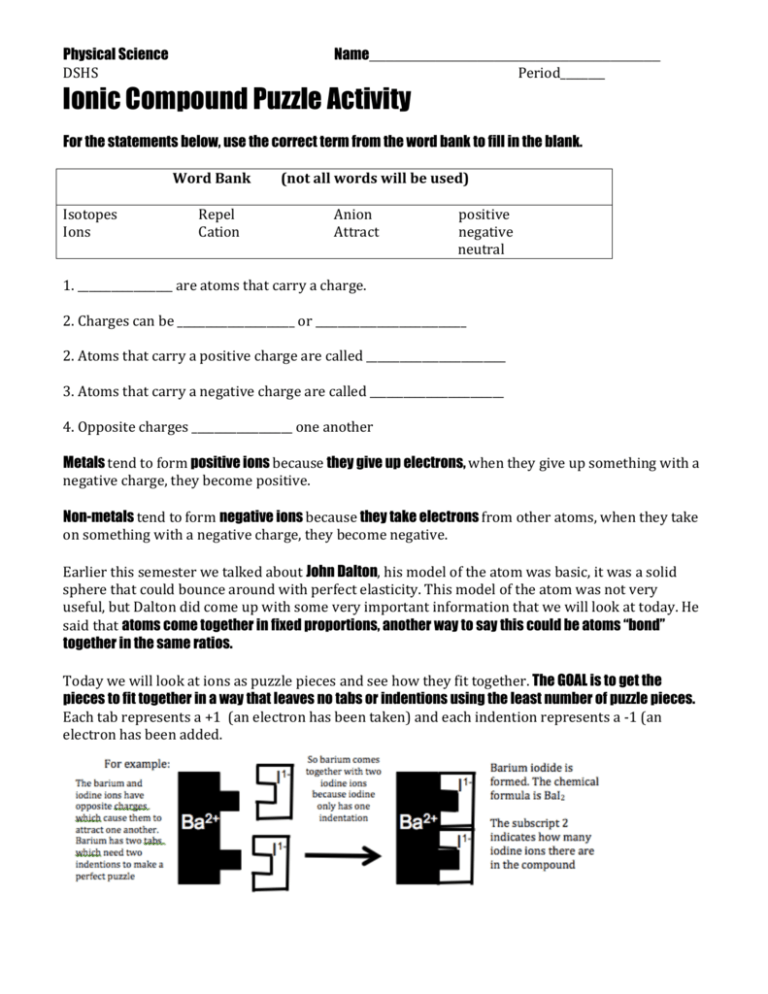Ionic Compound Puzzle Activity
advertisement

Physical Science DSHS Name___________________________________ Period________ Ionic Compound Puzzle Activity For the statements below, use the correct term from the word bank to fill in the blank. Word Bank (not all words will be used) Isotopes Repel Anion positive Ions Cation Attract negative neutral 1. _________________ are atoms that carry a charge. 2. Charges can be _____________________ or ___________________________ 2. Atoms that carry a positive charge are called _________________________ 3. Atoms that carry a negative charge are called ________________________ 4. Opposite charges __________________ one another Metals tend to form positive ions because they give up electrons, when they give up something with a negative charge, they become positive. Non-metals tend to form negative ions because they take electrons from other atoms, when they take on something with a negative charge, they become negative. Earlier this semester we talked about John Dalton, his model of the atom was basic, it was a solid sphere that could bounce around with perfect elasticity. This model of the atom was not very useful, but Dalton did come up with some very important information that we will look at today. He said that atoms come together in fixed proportions, another way to say this could be atoms “bond” together in the same ratios. Today we will look at ions as puzzle pieces and see how they fit together. The GOAL is to get the pieces to fit together in a way that leaves no tabs or indentions using the least number of puzzle pieces. Each tab represents a +1 (an electron has been taken) and each indention represents a -­‐1 (an electron has been added. Physical Science Name___________________________________ DSHS Period________ For the following pairings, DRAW THE COMPLETE PUZZLE ( remember not all piece will be used and the goal is to have no tabs or indentations left ) Attempt to write the formula based on the number of each ion there is in the puzzle! Cu2+ and P3-­‐ Formula: ______________________ Cu+ and N3-­‐ Formula: ______________________ Ag1+ and Br1-­‐ Formula: ______________________ Ca2+ and Cl1-­‐ Formula: ______________________ Al3+ and O2-­‐ Formula: ______________________ Na+ and As3-­‐ Formula: ______________________ Physical Science DSHS Name___________________________________ Period________







